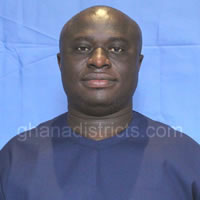Vulnerability
A significant proportion of Ghanaians including Children, unemployed youth, subsistence food crop farmers, women, persons with disabilities and elderly either do not reach their full human potential or cannot contribute effectively to economic growth due to vulnerability and exclusion.
Integrated Child Development
Human capital formation starts from early childhood. Investments in holistic childhood care and development for children yield the highest rate of returns of any child development at later stages in the life cycle.
Present State of Day Care Centres
There are 25 Day Care Centres in the district. However, most of the centres are at the verge of collapsing due to lack of funds and trained staff to manage the centres. In fact information available indicated that about only 30% of the centres are in full operation, the remaining 70% are on the verge of collapsing. The department has decided to reactivate and revive the centres which are partially functioning. Moreover communities without Day Care Centres are going to be encouraged to set up one.
The following outlined activities are going to be carried to improve the state of pre-schools
Children in difficult Circumstances- Child Care and Protection
Three Hundred and Sixty-Six (366) cases on child maintenance, child custody and denial of paternity were reported for settlement for the period 2003-2005. The above indicates that the district have lot of child care and protection problems. Child development related departments, Agencies and institutions such as social welfare department, WAJU, CHRAJ should therefore be strengthen to take care of child care related problems in the District during the plan period for G.P.R.S II.
Orphans
There are 20 orphans who are identified, registered and assisted in the district during the plan period. However, mass registration of orphans will be organized to cover all orphans in the district during the plan period for GPRS II
Rehabilitation of Physically Challenged
A total of 55 persons with various disabilities have been identified and registered in the district as shown in Table 1.29 below.
Out of the total number of people living with disability in the district about 12.5% have some sort of training either in formal educational institution or special education in Trade/Vocational Training at rehabilitation centres. Currently two physically challenged persons; a blind man and a deaf and dump person have gained admission into Edwenase Rehabilitation Centre. Another 3 blind ladies and a deaf have gained admission into Akropong special school for the blind and Jamasi School for the deaf respectively. The District Assembly is sponsoring them.
Five (5) physically challenged persons are in normal basic schools and are being sponsored encouraged and motivated by the Assembly. Two persons with disability in Konongo/Odumasi Secondary School and Akropong Training College are being sponsored by the the Assembly
Community Rehabilitation Programme
Due to financial constraints on the part of Government in training people living with disability in residential institutions and to foster integration with the abled body, it has become necessary to decentralised the training of the physically challenged (i.e. community based).
This is to train the physically challenged in their own environment or communities. This concept is termed Community Based Rehabilitation-CBR. The concept of community based rehabilitation aims at strengthening the relationship between individual persons, their families and social organisations in their communities. It seeks to rehabilitate the individual with the active participation of the family and the community. The role of Rehabilitation Services at the community level is to promote the active participation of the three units; individual; family and community.
To this end, the concept envisages that the community leadership takes up the responsibility. This is the idea behind the C. B. R. However, the community cannot do this without support. The C. B. R encompasses all services in other sectors such as the Ghana Education Service, Ghana Health Service, Department of Social Welfare as well as NGOs, which are available to support the efforts. The programme was extended to (20) twenty communities in the district by the end of the year 2004. Each community in the district is expected to benefit from the programme. However, due to limited resources, it has become very difficult to cover most of the vulnerable persons in the district.
We hope with the assistance from the GPRS we would be able to organise most women in the district and teach them income generating activities. It is anticipated that, most of them would become self employed and they would be able to raise funds to support themselves as well as their families.
The Aged
These include all persons above 60 years who are not strong enough to work in vigorous activities. An estimated 7% of these people are on some pension scheme of the sort and the rest solely depend on their families for survival. The basic problem facing these people is boredom as most family members leave the homes for their workplaces during the day. Another problem identified is financial since most of the aged are not on pension scheme.
Poverty Analysis
Economic activities
Primarily, the economy of the district is based on agricultural production. According to the Department of Agriculture, farmers are mainly peasant farmers cultivating food crops and cash crops. This means that, farmers produce very little to feed themselves and their family with only a few who have access to the market. The prices for the little that they produce to sell are also determined by traders who come from the big towns to buy the foodstuffs. Farmers receive very little returns from their produce which makes it difficult for them to meet their basic needs such as nutritious meals for their families, good shelters and decent clothing. Traders and other workers from within the district engage themselves in peasant farming to supplement the little returns they receive from their main occupation.
It can be deduced that greater proportion of the populace earn between GH? 0 – GH? 499.00 per month whereas 44.6 percent earn between GH? 500.00 – GH? 1499.00. Also, less than 4 percent of the population earn above GH? 1500.00 within the District.
In ensuring proactive measures to sustain growth and development in the district; there would be the need to facilitate the effective operations of the various agencies engaged in both formal and informal activities.
Issues
- People with high level training are needed to grow the economy.
- Conscious effort should be made to improve the educational background of the workforce.
The Asante Akim South Municipal has major problem with employment opportunities. An interview with the various Area Councils of the district showed that, most of the people had gone into peasant farming with limited employment opportunities for the youth. The unavailability of employment opportunities makes it difficult for parents to give their wards good education which increases the number of people engaged in peasant farming.
Issues
- Measures should be put in place to improve agricultural activities in the district
- Good prices should be offered to farmers for their agricultural produce
- More avenues should be created to offer employment to the people
Infrastructure
Inadequacy of basic infrastructure in the district is a factor to poverty manifestation. Basic community services like education, water supply, sanitation, health facilities, good roads and opportunities for personnel advancement make poverty manifest itself district-wide. About 70 percent of the roads are untarred and in very poor state with some other roads networks not accessible. Education and health infrastructure are found in poor and devastating conditions unlike water which the district has been able to provide more than half to various communities of the district with potable water supply.
The people in the district are poor because they do not have regular income. In view of this, they can neither send their children to school nor access the few amenities available due to their productivity levels. The high illiteracy level of the district has constrained their ability to adopt modern technology. This situation has led to the use of low and indigenous technologies in their farming activities which generate low returns.
Among the current coping mechanism includes working hard on their farms, living on charity, remittance from family members, borrowing, forming co-operatives and learning of new skills. Among the future coping mechanism are: making agriculture more attractive, growing different cash crops, government interventions, provision of social amenities
Poverty Pockets of the District
The district is divided into nine (9) Area councils and two (2) Town Councils. Due to the interrelated activities which are undertaken by the various Area Councils, poverty issues are synonymous while the other two town councils have also got similar poverty characteristics. Table 2.1 below illustrates the poverty pockets of the district.
From table 2.6, it is clearly illustrated that, most part of the district have common poverty characteristics. It can be deduced that, the district lacks access to good roads, employment opportunities, educational facilities as well as health. Evidently, interviews with the various area councils on poverty perception had similar response from the various area councils.
Measures to Reduce Poverty in The District
The Assembly has initiated a number of interventions in the district to reduce poverty ever since it was established. Among such interventions were programmes and projects in the first Medium Term Development Plan (1996–2000) prepared out of the vision 2020, the second Medium Term Development Plan (2000-2004) prepared out of the GPRS I and the third Medium Term Development Plan which was prepared out of the GPRS II.
Poverty levels in the district keep rising even though about 50 percent of these programmes and projects were successfully implemented. Though these programmes and projects were prepared with the same procedure, they were not able to meet the targets which were set. A major contributory factor to this situation is political will to implement them.
Agriculture being the main means of livelihood employing about 75% of the population needs major inflow of resources to improve upon productivity. Resources from government and other development partners like International Development Agency (IDA) could help improve on the agricultural sector. This could be in the form of skills, financial support and machineries to produce the raw materials like cassava and other foodstuffs into semi-finished goods in order to add value to their produce. Likewise, infrastructure and service sectors, to reduce poverty in the district the policy objective should be to improve access to these services. Emphasis should be placed on, massive construction and rehabilitation of roads, and the provision of water and electricity.
Under human resource development, the policy should be job creation through the setting up of agro – based industries in the district. The presidential special initiative on cassava should be given the needed attention. The district should also concentrate on skills development among the youth. The Asankare Youth Development Institute should be revitalised by the Assembly to train the youth in diverse employable skills.
To promote good governance, the existing institutions in the district should be strengthened to enable them perform their constitutional functions. The NCCE, the Courts and the police should be given the needed logistical support. To enable the people participate in government, the Assembly substructures should be made to function. The Town /Area Councils, Unit Committers should be involved in decision making at the local levels.
Finally, in order to reduce the incidence of poverty in the district, the collaborative effort of all stakeholders such as the district Assembly, the decentralised departments, chiefs, Communities and development partners should be garnered.
Date Created : 11/23/2017 3:40:36 AM





 facebook
facebook X (twitter)
X (twitter) Youtube
Youtube +233 593 831 280
+233 593 831 280 0800 430 430
0800 430 430 GPS: GE-231-4383
GPS: GE-231-4383 info@ghanadistricts.com
info@ghanadistricts.com Box GP1044, Accra, Ghana
Box GP1044, Accra, Ghana